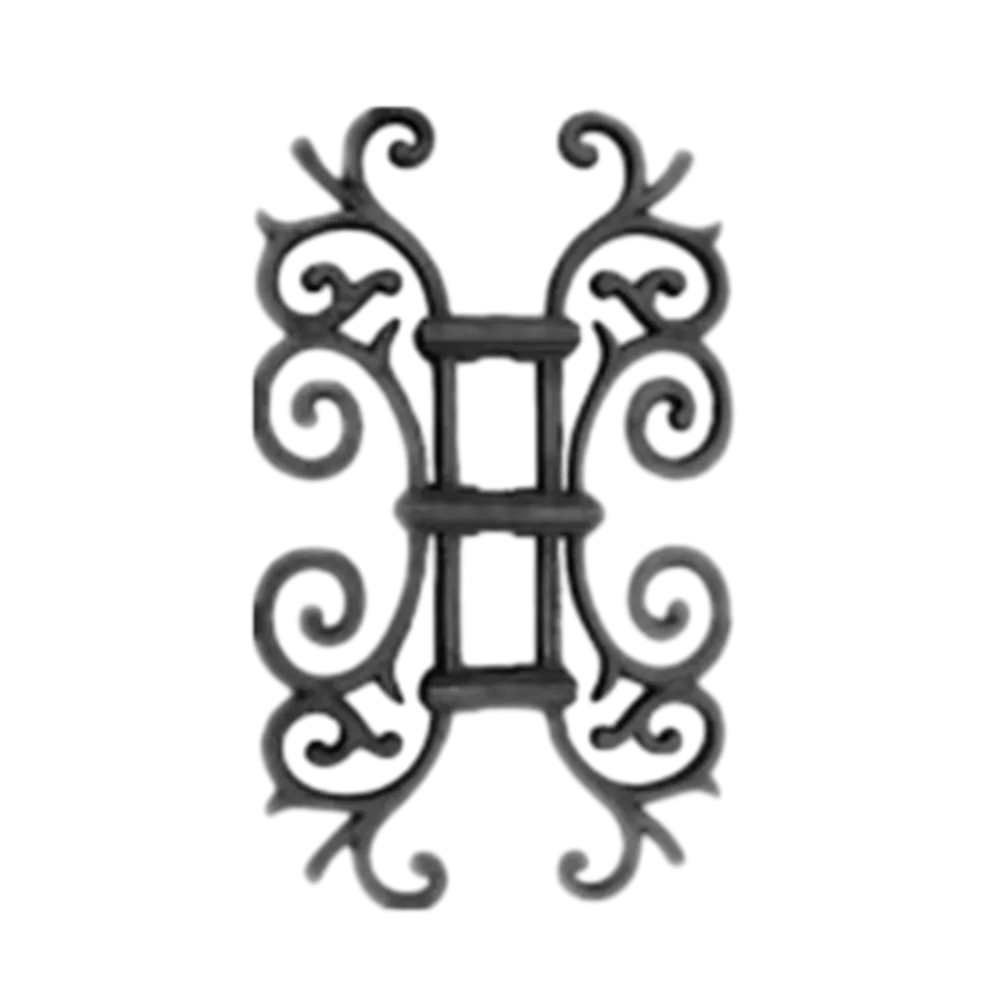Understanding Rust Formation on Wrought Iron Materials and Prevention Techniques
Understanding Rust on Wrought Iron Causes, Effects, and Prevention
Wrought iron, known for its malleability and durability, has been a preferred material in construction, automotive, and art for centuries. However, like all ferrous materials, it is susceptible to corrosion, particularly through the process of rusting. Rust, scientifically identified as iron oxide, forms when iron reacts with moisture and oxygen in the environment, leading to a variety of challenges for wrought iron structures and components. This article delves into the causes, effects, and strategies for preventing rust on wrought iron.
Causes of Rust Formation
The primary catalyst for rust formation on wrought iron is moisture, which can arise from various environmental conditions such as rain, humidity, or contact with water. When wrought iron is exposed to these elements, the oxygen and water molecules initiate an electrochemical reaction. This reaction begins with the oxidation of iron, resulting in the formation of iron ions and the release of electrons. When these electrons interact with oxygen and water, they lead to the production of iron oxides, commonly recognized as rust.
Factors that accelerate the rusting process include salt, which is prevalent in coastal areas and can significantly speed up corrosion, and pollution, where acidic compounds in the atmosphere contribute to the degradation of wrought iron structures. Additionally, mechanical damage or scratches can expose fresh metal surfaces, providing more opportunities for rust formation.
Effects of Rust on Wrought Iron
The effects of rust on wrought iron can be extensive and damaging. Rust not only alters the aesthetic appeal of wrought iron objects—often leading to a flaky, discolored appearance—but also compromises their structural integrity. Over time, the expansion of rust can create internal stresses, leading to cracks or even complete structural failure if left unaddressed.
rust on wrought iron

In architectural applications, rust can weaken support beams or railings, posing safety hazards. In artistic applications, such as wrought iron gates and sculptures, rust can diminish the visual quality of the artwork and may even require costly restoration.
Preventive Measures Against Rust
Fortunately, there are several effective strategies to prevent rust on wrought iron. The first line of defense is regular maintenance, which includes cleaning wrought iron surfaces regularly to remove dirt, debris, and moisture. Applying a protective coating, such as paint or a specialized rust-resistant sealant, creates a barrier against moisture and air exposure.
For existing rust, early intervention is crucial. Sandblasting or wire brushing can effectively remove rust from surfaces, followed by the application of a rust-inhibiting primer and paint. Additionally, applying a wax or oil-based finish can further protect against moisture infiltration.
Another proactive strategy includes installing wrought iron in locations that minimize exposure to moisture. For example, providing adequate drainage and avoiding direct contact with water sources can significantly reduce rust formation. In coastal areas where saltwater is a factor, using stainless steel fasteners and fittings may be advisable to improve longevity.
Conclusion
While wrought iron is a beautiful and durable material, it is not without its vulnerabilities. Understanding the causes and effects of rust formation is crucial for anyone working with or using wrought iron. Through preventive measures and regular maintenance, it is possible to preserve the integrity and aesthetic appeal of wrought iron structures and pieces, ensuring they remain valued assets for years to come. By taking a proactive approach, we can effectively manage the risks associated with rust, allowing us to enjoy the enduring beauty of wrought iron in various applications.
-
Wrought Iron Components: Timeless Elegance and Structural StrengthNewsJul.28,2025
-
Window Hardware Essentials: Rollers, Handles, and Locking SolutionsNewsJul.28,2025
-
Small Agricultural Processing Machines: Corn Threshers, Cassava Chippers, Grain Peelers & Chaff CuttersNewsJul.28,2025
-
Sliding Rollers: Smooth, Silent, and Built to LastNewsJul.28,2025
-
Cast Iron Stoves: Timeless Heating with Modern EfficiencyNewsJul.28,2025
-
Cast Iron Pipe and Fitting: Durable, Fire-Resistant Solutions for Plumbing and DrainageNewsJul.28,2025
-
 Wrought Iron Components: Timeless Elegance and Structural StrengthJul-28-2025Wrought Iron Components: Timeless Elegance and Structural Strength
Wrought Iron Components: Timeless Elegance and Structural StrengthJul-28-2025Wrought Iron Components: Timeless Elegance and Structural Strength -
 Window Hardware Essentials: Rollers, Handles, and Locking SolutionsJul-28-2025Window Hardware Essentials: Rollers, Handles, and Locking Solutions
Window Hardware Essentials: Rollers, Handles, and Locking SolutionsJul-28-2025Window Hardware Essentials: Rollers, Handles, and Locking Solutions -
 Small Agricultural Processing Machines: Corn Threshers, Cassava Chippers, Grain Peelers & Chaff CuttersJul-28-2025Small Agricultural Processing Machines: Corn Threshers, Cassava Chippers, Grain Peelers & Chaff Cutters
Small Agricultural Processing Machines: Corn Threshers, Cassava Chippers, Grain Peelers & Chaff CuttersJul-28-2025Small Agricultural Processing Machines: Corn Threshers, Cassava Chippers, Grain Peelers & Chaff Cutters












